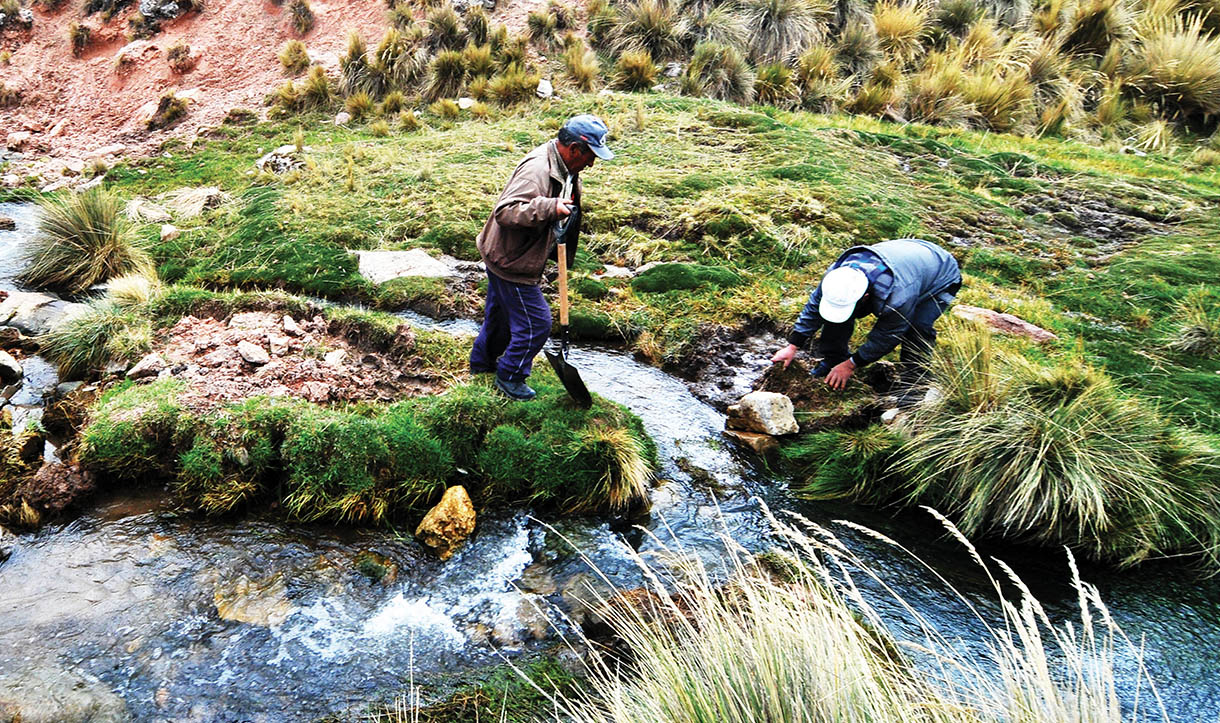Step 6.6: Formulate a case for investment
The case for investment sets out the rationale for prioritizing biodiversity finance in policy, legislation, plans and projects in language that the investors and financers can understand. It should convince decision makers to act by highlighting the benefits of taking biodiversity into account in decision-making, and recognizing the associated costs and risks of business as usual. The investment case for the Plan and the cases for the different finance solutions can be adapted to different perspectives and interests based on the target audiences (see Box 6.7).
Box 6.7: Adapt the Investment Case to Different Perspectives and Interests
Depending on the key stakeholders and decision makers for the Plan and its finance solutions, the investment case should be adapted to different perspectives, such as:
-
Government is usually interested in the economic and social returns. This includes the impact on GDP, jobs, etc., and also resilience and avoided social and capital costs (e.g. from improved flood risk management as a result of catchment rehabilitation). Benefits are assessed against trade-offs and the needs of different interest groups and political constituencies.
-
The private sector is interested in its dependency on natural resources (e.g. sourcing raw materials, water, energy, etc.), the impact of businesses on biodiversity and via biodiversity on health, well-being, and other companies, operational risks (e.g. supply chain disruption) and market opportunities (e.g. new products, markets, leadership, growth, etc.).
-
Development partners usually seek to support global and national public goals such as the SDGs. They consist of traditional donors, civil society organizations and faith-based organizations.
-
Philanthropists usually seek to understand the social and environmental impact of the initiatives they finance. They also seek assurances on how the money will be spent and on transparency. The strategy will be different for foundations, high net worth individuals and the general public.

As stated above, the investment case for the Finance Plan is a combination of two approaches. The first examines the economic benefits of sustainable biodiversity management in the country – why implement a Biodiversity Finance Plan at all? The other approach is aimed at elaborating an investment case for each finance solution. Both business case types can be subdivided into five elements described in Box 6.8.
Box 6.8: Five Elements of an Investment Case
This approach, most commonly used in the UK, New Zealand and Australia, distinguishes five elements of the business or investment case. Generally, business plans and early-stage business cases will use the elements earlier in the list; more developed cases (approaching delivery) will put more emphasis on the elements lower down the list.
-
Strategic case11 – Is the proposed solution supported by a compelling case for change that fits within the strategic context and meets biodiversity, public sector, or business needs?
-
Economic case – Under a cost-benefit analysis, will society be better off? Are the distribution of any economic changes (who faces costs and who receives benefits) manageable or desirable?
-
Financial case – Is the proposed financial cost affordable and is there a clear path to funding? Does the solution optimize value for money?
-
Management case – Is the proposal achievable and can it be delivered successfully?
-
Commercial case (for market instruments only) – Is the proposed solution commercially viable?
It is important to think about a case for investment not only as an economic argument but also as a social and emotional argument, and consider intrinsic arguments. Table 6.3 from South Africa provides some talking points for building buy-in for biodiversity in decision makers and the public.
Table 6.3: South Africa’s Eight Value Propositions for Biodiversity
| Message | Short Description |
|---|---|
| National asset | Biodiversity is natural capital with immense economic significance for South Africa. Investing in natural capital, by giving a superior return on the investment, is investing in our country. |
| Children’s legacy | Every decision government makes affect the future of biodiversity – a rich or impoverished natural world that we leave for our children and children’s children. By investing in nature we take care of our families. |
| Practical solutions | There are practical, realizable things that government can do to protect and enhance our “natural infrastructure” |
| Wealth of the rural economy | Biodiversity is the natural capital of the rural poor. We need to unleash the potential of biodiversity to develop rural economies. |
| Climate change | Good biodiversity management can slow down climate change and its impacts. Our natural wealth can help to save us from natural disasters. |
| Global leadership | South Africa is a world leader in biodiversity. As the world faces a global biodiversity crisis, South Africa can spearhead innovative solutions. |
| Health | Healthy, thriving biodiversity is vital for a healthy population. Our rich variety of flora and fauna provides natural medicines used by over 80 percent of our population. |
| Humanity | As humans, we are part of the web of life. Nature’s ubuntu is all around. |
Plan-Level Case
At the Plan level, the investment case should address both the benefits of investing in biodiversity in general, and the benefits of investing in and implementing the BFP itself. It can focus on the strategic case and the economic case. The strategic case is a narrative that highlights how the investments will enhance biodiversity’s contribution to the economy, society and sustainable development. The economic case can be compiled using cost-benefit analysis and cost-effectiveness analysis approaches (see Appendix III), drawing on economic valuation studies, natural capital accounting or studies from programmes like TEEB and the Poverty Environment Initiative (PEI). This analysis is presented in the early part of the Plan and builds on the information compiled in BIOFIN assessments. Second, the case should present arguments for implementing the BFP itself, including the value of a mix of solutions, the benefits of leveraging small investments for larger long-term financial flows, etc.
Many NBSAPs and other strategic plans already provide sound arguments to use in the Finance Plan by highlighting the benefits that will accrue to biodiversity, including threatened and endangered species and habitats. These plans include ecosystem services arguments. However, these benefits are often not effectively translated into supporting economic, financial and social arguments. Studies that contain an economic valuation of ecosystem services can provide additional arguments for investing in biodiversity, using appraisal tools such as CBA (see Appendix III). Initial data was identified in the PIR and can be summarized here. If there are no adequate data, additional (social) CBA or a Targeted Scenario Analysis (TSA) might be required in support of the Plan or a specific finance solution. The package of solutions in the Plan could create a “scenario” for sustainable biodiversity management that effectively lends itself to economic analysis comparing expected outcomes under the Plan to a current or “business as usual” case. Arguments should focus on key entry points for decision makers. For example, improved water resource management has greater value in the context of increased risks of drought and/or floods because of climate change.
The Plan-level business case should start with the financial data: putting the sum of the resources to be mobilized and/or saved, in the context of national budgets and current biodiversity expenditure, revenues and gaps identified in the BER and FNA (Chapters 4 and 5). The investment case for the Plan as a whole makes references to the criteria for an appropriate mix of solutions, described in Box 6.6: finance, risk management, planning, and integration.

Solution-Level Case
At the solution level, the investment case includes more technical and financial justifications to explain the selection and design of the prioritized finance solutions. This information is elaborated in the feasibility studies and presented in the technical proposals. In general, each finance solution has its own investment case that is summarized as part of its technical description in the main body of the BFP and presented in greater detail as part of the feasibility assessment. These solution-level business cases are derived entirely from the feasibility analysis described in detail in Step 6.5. They may need to present this information in a detailed economic case (see Appendix III), or use it to make a financial case, such as calculating returns on investments (see Box 6.9).
Some countries might want to organize the investment case for solutions by grouping some solutions as a finance package for a specific objective such as protected area (PA) financing. Each of those items might in turn be linked to a combination of finance solutions. This is the approach used for finance for permanence initiatives such as “Bhutan for Life” and “Costa Rica Forever”. These initiatives, together with the Bear Rainforest project (British Columbia, Canada) are examples of a large-scale and concentrated efforts to mobilize significant resources for biodiversity programmes.